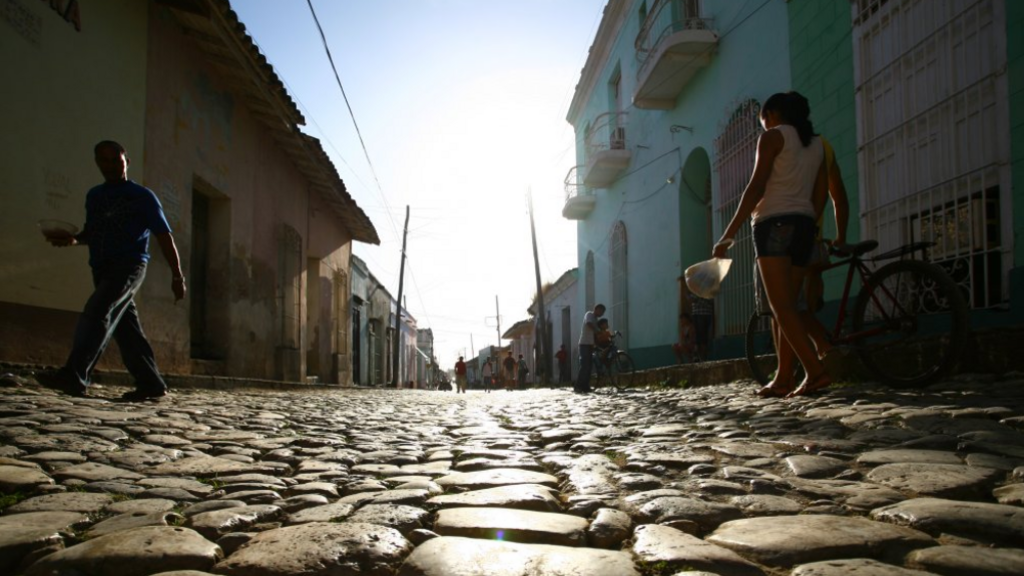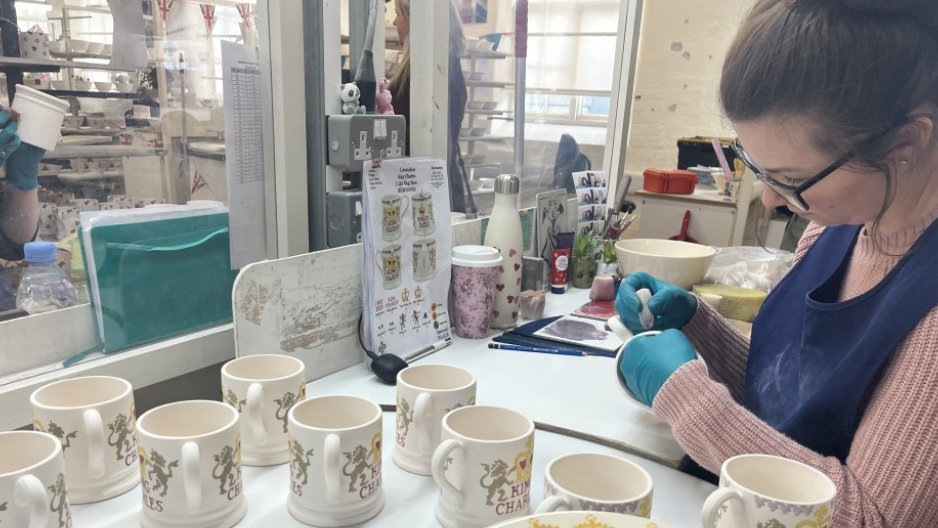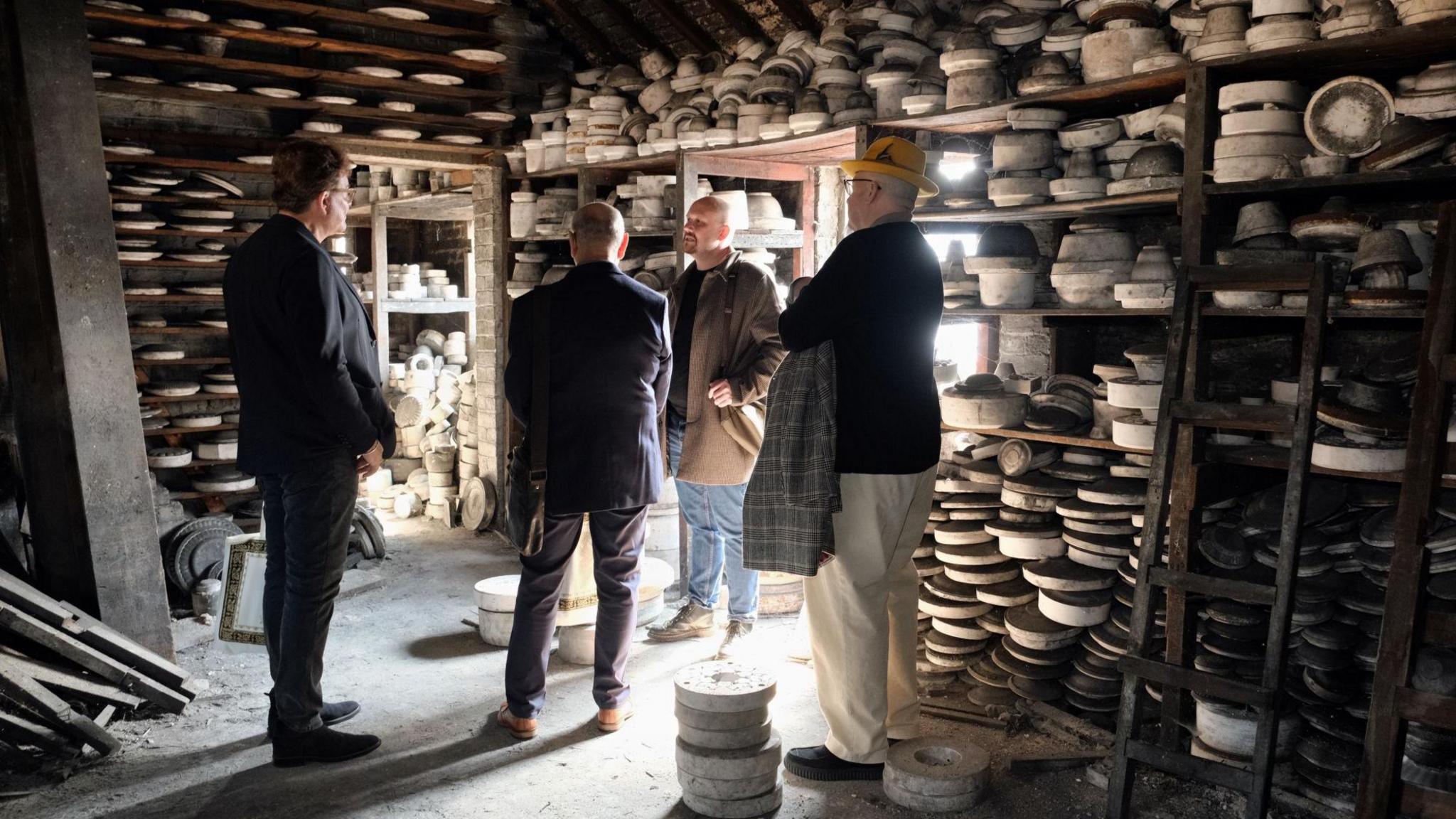What Stoke-on-Trent has in common with Chile and Cuba

What does Trinidad, Cuba, have in common with Stoke-on-Trent?
- Published
Stoke-on-Trent has been afforded World Craft City status to mark its pottery heritage and the cultural impact of that legacy. As the dust settles on the global recognition, those involved in making the case reflect on what it means for a city that joins a relatively exclusive club. But with which other areas of the world is Stoke-on-Trent now rubbing shoulders?
Stoke-on-Trent is now one of just 65 locations across the globe to be recognised by the World Crafts Council for a longstanding crafts tradition.
The "wonderful, historic, and unique" city's accolade has been granted for its centuries-long association with pottery - a measure that also marks the social and economic contributions linked to the trade.
Being listed among similarly-recognised areas of Chile, China and Spain - more on these later - means that Stoke-on-Trent could be eligible for more government support and be promoted as a tourist destination.
Clare Wood, from the British Ceramics Biennial, who worked on the bid, said she was hopeful of such an outcome.

Stoke-on-Trent has been described as the 'world capital of ceramics'
"We know that other world craft cities have had a significant improvement in their abilities to attract grants and investment, so we expect that to happen for Stoke-on-Trent," Ms Wood said.
Conversations around this had already begun, she added, saying the city's new status meant investors and tourists alike would see it in a different light.
Paul Williams, from Stoke Creates, external, who led the application, added: "This designation is a fitting endorsement by the World Crafts Council of Stoke-on-Trent’s global renown as a city of craft, artistry, industry and innovation."
The places already recognised by the World Crafts Council for their skills and wares are varied.
In the UK, for instance, The Outer Hebrides in Scotland is World Craft Region for Harris Tweed - a fabric handwoven by islanders and made from pure virgin wool that is also dyed and spun locally.
In Spain, the small city of La Bisbal d’Empordà is recognised as a city for ceramics.
According to a tourism website for the region, it is known for "slender silhouettes of old industrial chimneys and a shopping area that is focused on marketing the different pottery products".

Isle of Barra in the Outer Hebrides, Scotland, famed for Harris Tweed
Across the Atlantic, Trinidad in Cuba is the city for needlework. The World Crafts Council said mention of handicrafts there was first made in a document from 1520, stating that a local merchant was paid for velvet imported from Seville.
Liquiñe in the Los Lagos region of Chile is recognised as the city for woodcarving. Each piece is made of moist wood from dead trees, which is left to dry for between 60 and 90 days.
Linshu County, China, is known as World Craft City for wicker weaving, while Meybod, Iran, is celebrated for handwoven floor covering.
The World Crafts Council, which was founded in 1964, said its main objective was to strengthen the status of crafts in cultural and economic life.
The leader of Stoke-on-Trent City Council, Jane Ashworth, said the recognition underlined a "wonderful, historic, and unique" city.
"Our heritage dates back hundreds of years and we are the world capital of ceramics, visible in museums all over the world," she said.
Craft and ceramics represent Stoke-on-Trent's past, present and "without question our bright future", she added.
Follow BBC Stoke & Staffordshire on Facebook, external, X, external and Instagram, external. Send your story ideas to: newsonline.westmidlands@bbc.co.uk, external
Related topics
- Published18 July 2024
